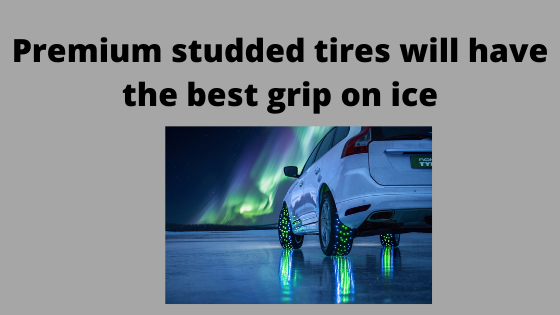By default, winter tires should be approved for winter use, but it is always safer to check it is really the case. Winter approved tires should have a severe service emblem that shows a mountaintop with 3 peaks with a snowflake inside it. This is also commonly referred as Alpine-symbol or 3PMSF-symbol. If your winter tires don’t have this, you should check the tires to see if why they don’t have the marking. It isn’t enough to only have tires with M+S marking, as this is not an indication that they are approved for winter use, it is merely a marking that the tire manufacturer can add to indicate that the tread is designed to handle mud and snow.
All-season tires are not approved for winter use and shouldn’t be used once you have winter conditions, which can even be just low winter temperatures. With low temperatures the rubber used in the all-season tires will turn hard, which lowers their ability to create the necessary friction needed for good grip. For winter grip you will need to have tires that will remain soft and flexible even at low winter temperatures. You will also need to have a tread pattern that can handle snow, ice and slush. Without this you will not have grip on ice, while snow and slush might get stuck in the tread making driving almost impossible.
Instead of all-season tires, you have a group of tires that are called all-weather tires. These tires are basically a hybrid between all-season tires and winter tires. They have a tread that can handle both dry and wet summer roads just as well as they can handle snowy and icy winter roads. This makes these tires as an ideal all-weather tire if you feel that you don’t want to change between all-season tires and winter tires or you feel that you have such a limited winter period that it is too much of a hassle to switch for that short time.
If you opt to use dedicated winter tires, then you will have to make sure that they are approved and that they are the best for the winter conditions that you aim to drive in. Not all places allow for use of studded tires, but if they do, you might fare better with these than the non-studded tires. Studded tires have metal studs that protrude from the tread to ensure good grip on ice, as the studs can grip the ice. This will be the best solution for creating grip and traction on icy surfaces. The non-studded tires will use other methods for creating grip on ice, as they don’t use any studs. They instead use gripping particles, usually made of silica, that will create a sandpaper like surface. In addition also the silica, they will often rely on innovations of the tread that will incorporated into the tread design, which will improve the grip both on icy and snowy roads.
For more information regarding winter approved tires, visit: www.nokiantires.com
